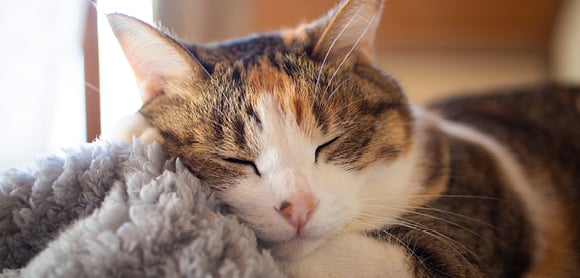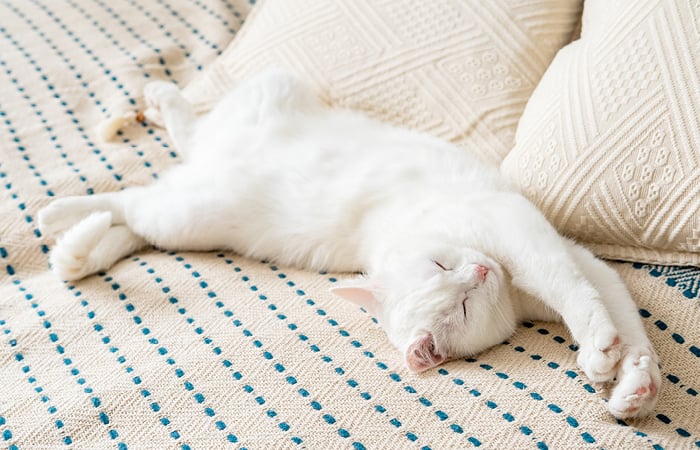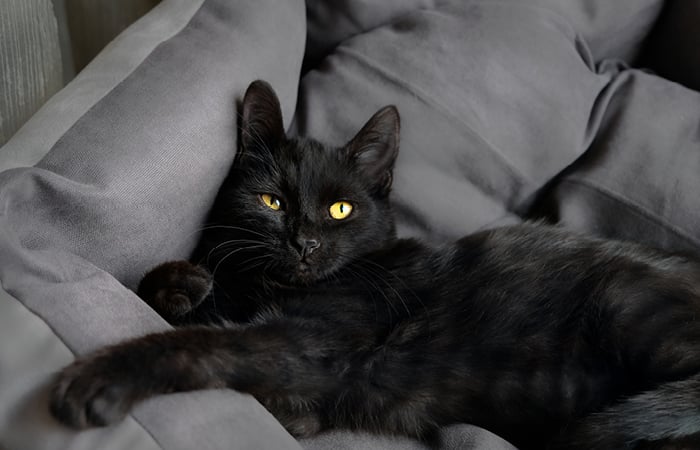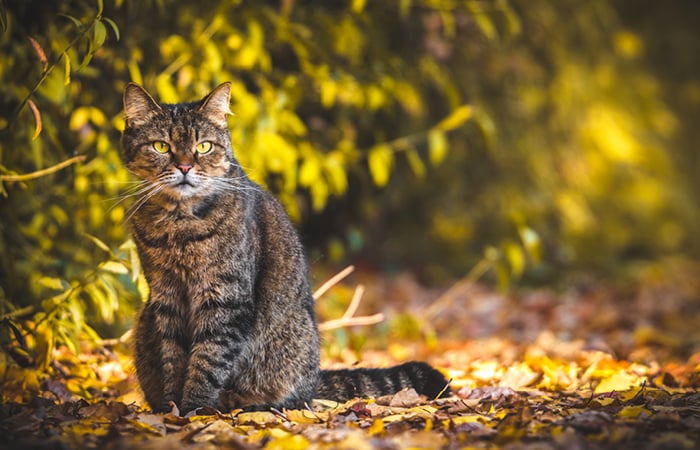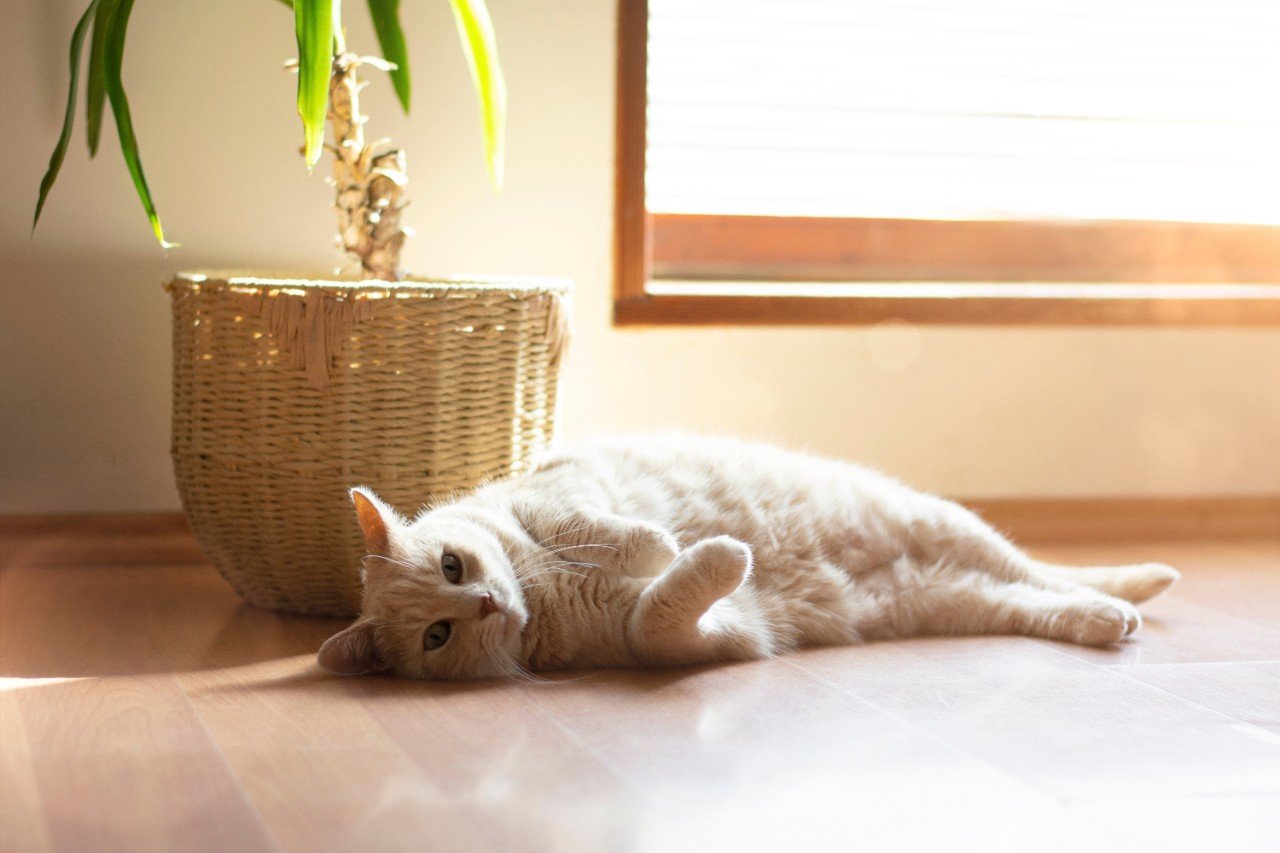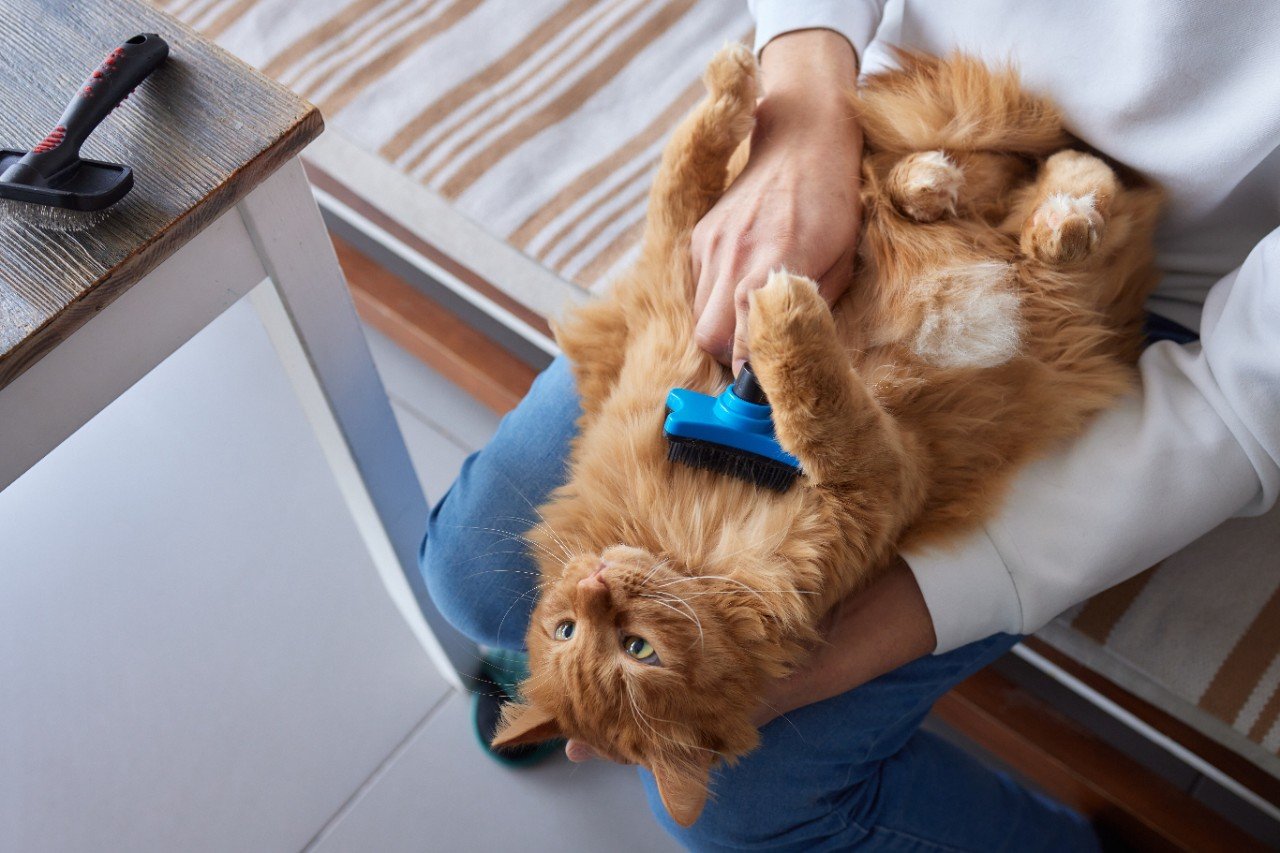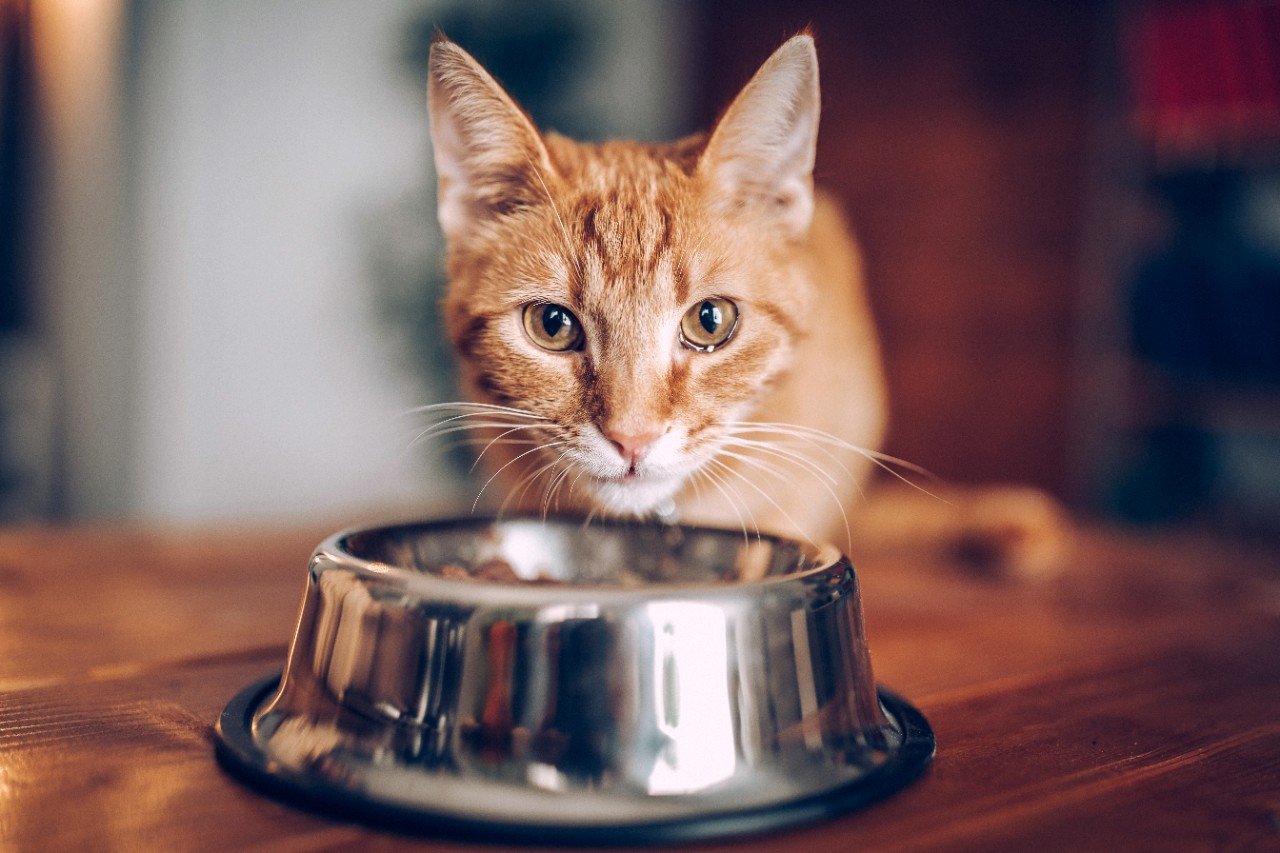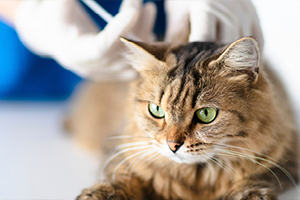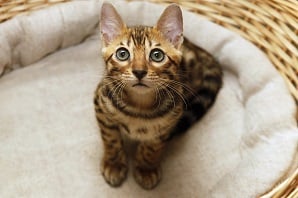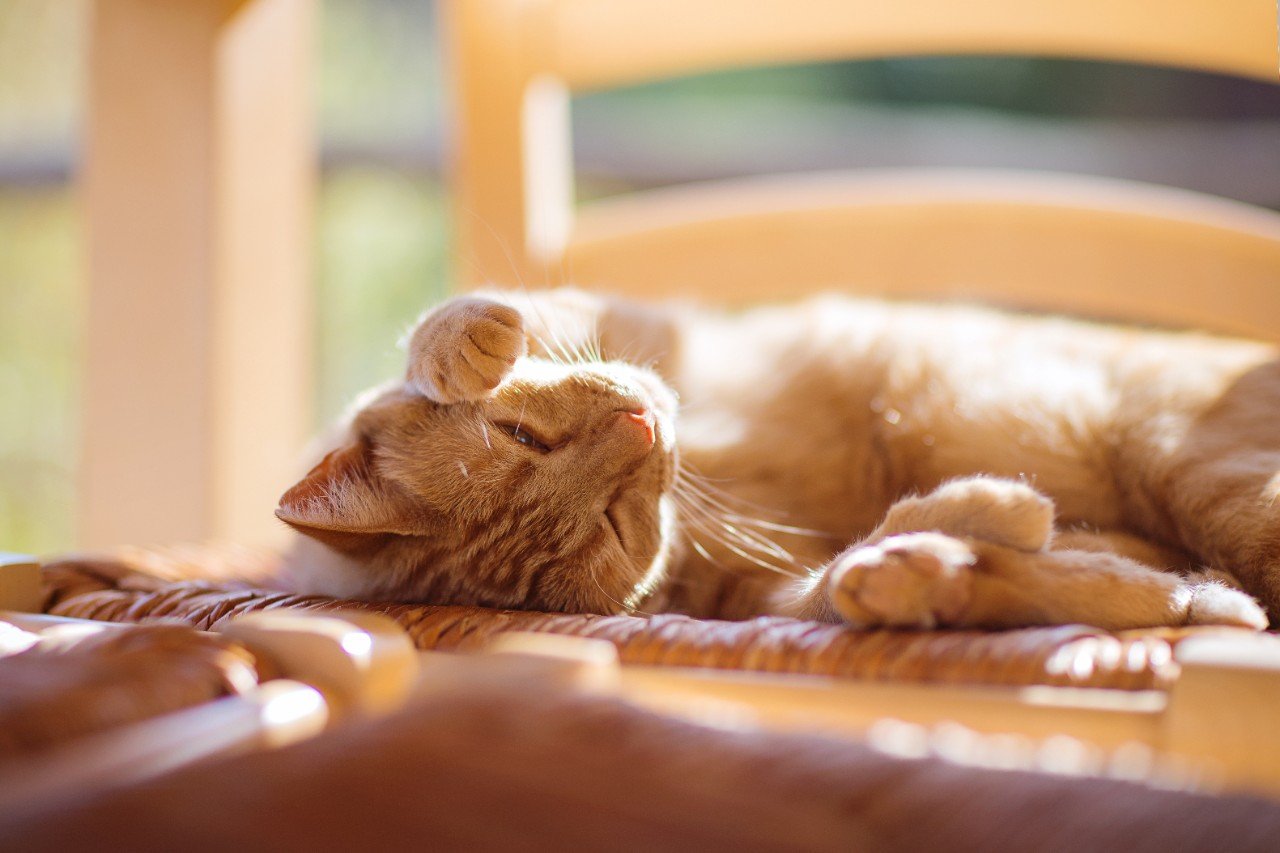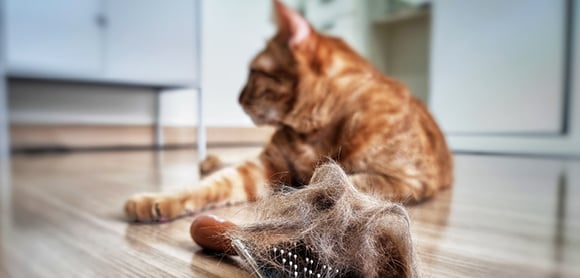Can cats see in the dark?
Quick Links
Can domestic cats see in the dark?
Cats’ eyes have large corneas
The cornea – or transparent outer layer at the front of the eye – allows light to enter. In relative terms, a cat's cornea is 50% larger than ours. That means that more light can enter a cat’s eyeballs compared to humans. So when we think it’s pitch black, a cat’s eyes can still detect what little light there is.
Large corneas also mean cats have a wider field of vision than humans. While humans have a field of vision spanning 180 degrees, a cat’s field of vision extends to 200 degrees, helping them detect movement to the side of their bodies.
Download our cat eye infographic here.
Cats’ pupils are slit-shaped
Many animals, including humans, have circular pupils. But a cat’s pupils are shaped like an oval or slit. This means they can adjust to both low-light and bright daylight conditions. Oval-shaped pupils are more common in predators that ambush their prey at dawn or dusk – like cats. Their vision is clearest when looking at objects around six metres away – the perfect distance to pounce on that toy or prey.
Cats’ pupils can also dilate more than ours, allowing their eyes to detect far more light. While a human pupil can expand up to 15 times greater than when it is smallest, a cat’s pupil can expand by 135 times from its smallest size.
Cats’ eyes have a reflective surface
Cats’ eyes contain more light-detecting photoreceptors
Within the retina, human and cat eyes both contain a blend of photoreceptors known as rods and cones. Rods are used for peripheral vision, night vision and detecting motion. Cones detect colours.
Human eyes have roughly 120 million rod cells, but cats’ eyes have up to eight times more than this. So it’s no surprise they’re far better at seeing in the dark than we are. But like dogs, since cats have relatively fewer cones, they can’t distinguish colours as well as we can.
Other senses cats use in the dark
Keeping your cat entertained at night
Cats are often awake and ready to play at the very start and end of the day – typically when we’re usually in bed.
In the wild, these are the times of day their prey would be most active. Even though your domestic cat doesn’t need to hunt anymore, it’s still a good idea to give them plenty of opportunities to keep their mind and body active once the sun goes down. Choose a range of toys so your cat can practise their stalking and pouncing skills, offer them a puzzle toy to stretch out meal times, and make sure they have plenty of places to climb, scratch and hide.
Petplan is a trading name of Pet Plan Limited (Registered in England No. 1282939) and Allianz Insurance plc (Registered in England No. 84638), Registered office: 57 Ladymead, Guildford, Surrey GU1 1DB.
Pet Plan Limited is authorised and regulated by the Financial Conduct Authority. Financial Services Register No. 311969. Allianz Insurance plc is authorised by the Prudential Regulation Authority and regulated by the Financial Conduct Authority and the Prudential Regulation Authority. Financial Services Register No. 121849. Pet Plan Limited is a subsidiary of Allianz Insurance plc.



